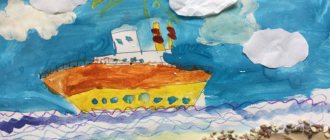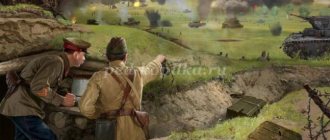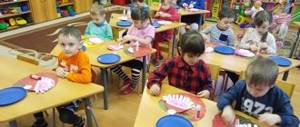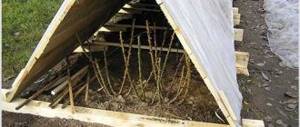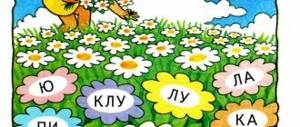- Reports and messages
- Plants
- Rowan
Rowan is an unforgettable plant, the bright berries of which often turn us to the past, to childhood, or remind us of warm summer.
In the old days, it was mentioned in every home as a protector against illnesses. Currently, there are many signs associated with it. If we take the meaning of the word ripple as a basis, then we can compare the appearance of the berries from a distance with irregularities and protrusions on the surface. This became one of the options for the name of the berry.
It is found in the Urals, the territory of the North Caucasus, and occupies the forest zone of the European part of Russia. Among the main characteristics of mountain ash, the first place is its adaptability to harsh winter conditions; in addition, it loves shade and moisture. The climate of the southern regions of Russia is difficult to tolerate.
There are more than 80 species of rowan in the world. The most common mountain ash is a small tree (up to 15 meters), the table of which has a smooth gray surface. The crown resembles an openwork pattern.
Rowan blossoms typically occur in late summer and early autumn. The unusually bright fruits of this tree, collected in clusters, are very similar in structure to apples. Each bunch contains up to 50 berries. The rowan berry contains from 4 to 8 seeds. Its leaves are miniature and have serrated edges. Rowan berries acquire their unique taste with the onset of frost.
The lifespan of this tree reaches 200 years. The first flowering of rowan occurs at the age of 7 years.
The use of rowan is so widespread that children know about it. This is an ornamental plant that serves as decoration in the home or at a holiday. Well-known types of painting, for example, Khokhloma, contain drawings with weighty bunches of these berries. Currently, the use of mountain ash in landscape design is widespread. Bright fruits, which sometimes delight people even in winter, give a great mood. The leaves are suitable for preparing decoctions and infusions. Rowan berries form the basis of food for birds and animals. For humans, it is a storehouse of vitamins, including malic acid, vitamin C, and a large amount of carotene. Tannins contained in both berries and wood. Prevents the process of decay. That is why the durable, elastic wood surface of rowan has been used for a long time in the construction industry, for the manufacture of joinery.
Delighting the eye with its rich color, it takes place in works of art - painting, folk art, literature.
Report No. 2
Rowan is a low tree or tree-like shrub. Belongs to the deciduous genus and the Rosaceae family.
These trees are common in temperate climate zones: in Russia, Europe, Asia, and the north of the Caucasus. They grow in single specimens in forest and forest-steppe areas, on forest edges and clearings, as well as in parks, squares, and courtyards. The tree is unpretentious and grows on almost any soil.
Rowan has a very beautiful appearance. This tree has a smooth, smooth, shiny trunk and a dense, openwork foliage crown. It usually grows to a height of about 10 meters. The trunk of this tree is durable and elastic and is used for making dishes, carts, tool handles and in carpentry. And from rowan branches they weave furniture and various accessories.
Rowan blooms in late spring - early summer. When blooming, the flowers are white, pink or cream in color and are folded into umbrellas. The fruits ripen in early autumn. The berries are spherical in shape and colored bright red or bright orange. The size of these fruits is 10 mm, and they taste bitter. Rowan leaves have an oblong, pointed shape and are no more than 20 cm in size. In autumn, the leaves turn yellow and red. The lifespan of rowan is about 100 years.
Rowan is a winter-hardy tree, so it can withstand frosts in winter without any problems. Rowan fruits are distinguished by strong bitterness, which disappears after the first light frost and the berries acquire a sweetish taste. Rowan does not shed its berries in winter, thereby attracting the attention of titmice and bullfinches.
There are about 80 types of rowan. And only a few types of rowan grow in Russia: common, Siberian, smooth, Kashmir. The most common is the ordinary type. The berries of this species are red in color and have a tart, bitter taste. Siberian mountain ash is also called Anadyr or polar. This species survives frost, but grows no more than 3 meters in height. Smooth rowan or Amur rowan differs from other types in the orange color of the berries. And the Kashmiri mountain ash has completely white berries. This rowan is grown mainly for decorative purposes.
Currently, the most popular varieties are: Titan, Scarlet large, Rubinovaya, Daughter Kubovaya, Businka, Burka, Granatnaya, Dessertnaya, Vefed, Michurinskaya dessert, Angri. The Titan, Granatnaya and Burka varieties are excellent for preparing decoctions that are used for illnesses. And the varieties Vefed, Businka and Daughter Kubova have a sweetish taste. But the sweetest variety is Michurinskaya dessert. The Angri variety is characterized by large berries the size of cherries.
Rowan is a very healthy fruit tree, as it contains a large amount of vitamins A, B, C, as well as potassium, phosphorus, zinc, calcium and iron. Rowan fruits are eaten fresh, dried and pickled. The berries are used to make medicines, marshmallows, marmalade, syrups, compotes, add to tea, and also make jam, jams and preserves from them.
Interesting facts about rowan
Fact 1. Common rowan, widespread in Russia, grows on almost our entire continent. In the north, it almost reaches the Arctic Circle, and there, instead of being a tree, it turns into a bush. However, it remains a plant of the same species.
Fact 2. From a botanical point of view, bitter rowan fruits are related to apples. But they are eaten mainly by birds, because the bitter taste does not make people want to eat them. And this is good - the fruits of this tree are poisonous to us when fresh! But frosts lead to the destruction of bitter and toxic substances in them, so frozen rowan acquires a sweetish taste and becomes completely edible.
Fact 3. Ripe fruits can remain on the mountain ash until the end of winter. They are a very important source of food for many birds, which gradually eat the frozen fruits. It is very difficult to get food from under the snow, so rowan is an easy source of nutrients for our feathered friends.
Fact 4. The fruits of different varieties of rowan, for example, Siberian, are used in medicine. They are rich in vitamins, which can be extracted from them through special processing. This tree is also valued by beekeepers, as it is an excellent honey plant.
Fact 5. Breeders have long developed new varieties from ordinary rowan, devoid of bitterness, as well as toxic substances that make its fruits bitter. They turned out to be heat-loving, but their fruits have a pleasant taste. They are grown in garden farms in the south of Russia, and in some other European countries too. The berries of these varieties can reach 2 cm in diameter and weigh up to 15-18 grams.
Fact 6. The severity of the surrounding climate directly affects the maximum height that a rowan tree can reach. In the northernmost regions, mountain ash usually grows up to 1-1.5 meters, and in the warm south it can reach 12-15 meters. One large tree produces up to 100 kg of fruit per season, sometimes even more.
Fact 7. Many of us have had the opportunity to feast on the fruits of chokeberry, which are tart and astringent to the mouth. But in fact, this plant has nothing in common with rowan, except for a certain external similarity and belonging to the same genus. Its closest relative is considered to be the common rose hip.
Fact 8. There are many traditional recipes for making jam, tinctures, jelly, compotes and other food and drinks from rowan. Of course, you can’t buy anything like this in a store, but in some villages and villages, rowan delicacies are still more or less popular.
Fact 9. In total there are about 200 types of rowan. Some of them are grown for decorative purposes, others for culinary purposes, and others grow in the wild on their own. Breeders have created many hybrid varieties, and some of them look quite unusual, for example, Integerimma or Greek rowan.
Fact 10. Rowan wood has been considered very valuable since ancient times.
A variety of products were made from it, from jewelry and musical instruments to furniture and carriages. It is still used in this capacity today, mainly in the production of various household utensils such as wooden handles for dishes and the like. Did you like the article? Share with your friends!
Rowan tree
Rowan is a tree that never grows tall (more than 10 m). There are just over 100 species of rowan, about 30 of which can be found in Russia. This tree is widespread in European countries, lives in North America, and also grows in Asia. Such a large habitat of the plant is due to the fact that rowan is not at all afraid of frost; it can grow on any soil. It even “climbs” into the mountains, but there it grows in the form of a bush. It is also not afraid of close-lying groundwater, which for most trees is an unsuitable factor for good growth.
Because of this unpretentiousness to climatic conditions, this tree can be used in gardening as a rootstock: used as a mother plant, grafting a quince or pear onto the rowan trunk. The so-called chokeberry is not a rowan, it is a different tree, although from the same family - Rosaceae.
Rowan is easily recognized by its leaves, which have from 11 to 23 leaflets. Young, just blossomed, they are a little “fluffy”, then they become naked. They are green in the summer and turn orange and red as autumn approaches.
The rowan tree blooms very beautifully. Its small flowers form very dense inflorescences located at the ends of the branches. The smell is quite specific, not everyone likes it, but insects pollinate the tree well. Rowan is a valuable honey plant.
After flowering, characteristic fruits are formed on the tree, similar to peas or beads, their diameter is about 1 cm. It is more correct to call them apples, since the tree belongs to the apple group. The fruits are bright red or deep orange, collected in clusters, each containing seeds.
Rowan fruits are rich in sugars, vitamins, especially ascorbic acid, and carotene. Therefore, the fruits of the tree can be used to treat scurvy. They also contain antiseptic substances (sorbic acid). The fruits are eaten, prepared as tinctures, made into jam, dried and even pickled. While they are fresh, they taste very bitter. But when the first frosts come, it disappears, the bitter substances of the fruit are destroyed.
Trees are often planted for decorative purposes. Wood can be used to make carpentry and jewelry. It is reddish and beautiful, it is well processed, painted, and easy to carve.
Rowan fruits do not fall in the winter, so they are an important food supply for wintering birds. They can also be fed to poultry.
The ancient Scandinavians and Celts, as well as the Slavs, considered rowan a magical tree and used it in their rituals. Rowan has long been used in folk omens. So, if there are a lot of fruits on the trees, then the autumn months will be rainy.
2nd, 3rd, 4th, 5th grade, the world around us
Project “A fire of red rowan is burning in the garden” in the middle group of kindergarten
Bibliographic description:
Sopova, T. A. Project “A fire of red rowan is burning in the garden” in the middle group of kindergarten / T. A. Sopova, S. A. Ilmushkina. — Text: direct // Innovative pedagogical technologies: materials of the VIII International. scientific conf. (Kazan, May 2020). — Kazan: Young scientist, 2020. — pp. 91-93. — URL: https://moluch.ru/conf/ped/archive/278/14202/ (access date: 10.10.2020).
The article describes the experience of kindergarten teachers in organizing and conducting an educational research project.
Key words: project, rowan, fieldfare, object of study, rowan fruits, experimental activities.
Nature pleases, attracts and inspires only because it is natural.
Wilhelm Humboldt
Preschool age is the most important period of personality development, when the foundation of patriotic education is laid. After all, right now it is important to introduce a child to love nature and his native land.
Patriotic feelings are formed gradually, in the process of accumulating knowledge and ideas about the world around us, about our native land. The natural world contains great opportunities for the comprehensive development of children, and above all for the formation of patriotic competencies. Thinking about nature under the influence of an adult, a preschooler enriches his knowledge and feelings, he develops a correct attitude towards living things, a desire to create rather than destroy. This is one of the most important tasks of a teacher’s work.
In our work with children, we constantly use examples from fairy tales. Not a single day goes by without a fairy tale. And our work on the project began thanks to a fairy tale.
One evening the children were read A. Lopatin’s fairy tale “The Magic Rowan.” Greatly impressed, the children began to discuss what they had heard. The guys made an unexpected discovery for themselves - such a unique tree also recently grew on the site of our kindergarten. But the rowan looked deplorable: the trunk was strongly bent, the rowan grew in the shadow of the elm tree and its branches stretched towards the light. And somehow, after a thunderstorm, after a strong wind, the rowan tree broke. Having heard what an interesting tree it turned out to be, the children decided to learn as much as possible about rowan and plant it on the site.
This is where a problem arose, taken from real life, familiar and significant for the child, to solve which he needs to apply the acquired knowledge, new skills that have yet to be acquired. Together with the children and parents, we decided to organize the project “A red rowan bonfire is burning in the garden.”
Goal: to develop children’s ideas about rowan.
Tasks:
- Expand children's knowledge about mountain ash: structural features, growth and possibilities of human use.
- Activate and enrich children's vocabulary when describing rowan and the taste of berries, interactive speech, memorizing proverbs and poems on the topic.
- Introduce application using the “rolling” technique, drawing a rowan brush with cotton swabs; develop a sense of color, shape, composition.
- To cultivate a humane, conscious attitude towards nature, to show the significance of the actions of each person in its conservation.
- Create a desire to improve the environmental situation in your city by planting a tree.
Project type : creative, educational and research.
Project participants : middle school children, teachers, parents.
Expected results:
- Children will learn about rowan and their sensory experience will be enriched.
- Children's vocabulary will be enriched and their coherent speech will improve.
- The group’s developing subject-cognitive environment will be enriched with new aids.
- Children will develop a respectful attitude towards each other in the process of joint activities.
Problem: most modern children rarely communicate with nature. Trees surround us constantly. Children, as a rule, pay almost no attention to them. The condition of these plants and their appearance reflect the ecological situation in which they live. Among them is a beautiful tree - rowan. It must be remembered that children’s often careless and sometimes cruel attitude towards nature is explained by their lack of the necessary knowledge.
Questions:
- Do you think trees are living organisms or not?
- What trees grow near our kindergarten?
- How are rowan trees different from other trees? What benefits does rowan bring?
- Do people pay enough attention to trees? And you? Have trees ever helped you? What about you?
- What plants have leaves similar to rowan? What plants have names similar to rowan?
In the course of working on the project, together with children and parents, we learned a lot of new things about rowan, got acquainted with fairy tales, riddles, songs, poems, sayings, proverbs, folk signs, had festive entertainment, collected visual material, a herbarium, etc.
Stage I - preparatory.
- Formulation of the problem.
- Selection of fiction: fairy tales, riddles, proverbs, poems, songs.
- Selection of educational, scientific literature.
- Selection of material and technical equipment for experiments and experiments.
- Creation of photo albums.
- Showing presentations about rowan.
- Watching videos about nature.
Stage II is the main stage.
- Conversations “Visiting the Rowan Tree”, “About Folk Traditions, a story about the Russian folk holiday “Rowan Tree”; “Streets of our city”, “How trees prepare for winter”, “Medicinal properties of mountain ash”, “Why September is called mountain ash”.
- ECD “Compiling descriptive stories about rowan with children.” Compiling comparative stories with children about rowan and any other tree of the child’s choice (for example, birch).
- Memorizing poems about rowan: “Rowan bunch” by E. Naumova, “Autumn” by O. Ryazanova.
- Reading poems: “Green Friend” by S. Zavyalov, “Rowan berries are blushing” by K. Naydenov, “What kind of berry is that red?” N. Shumov and others.
- Reading and discussion of M. Prishvin’s stories “Conversation of Trees”, “Autumn Leaves”.
- Experimental activity.
In the process of experimental activities, we create conditions for children to develop the ability to look at the object of research from different angles.
6.1. Examination through a magnifying glass of the bark of a rowan tree, its structure. Tactile experience: “What does rowan bark smell like?” Examination of rowan bark with closed eyes.
Conclusion: rowan bark is shiny, brown, with dark spots, slightly rough to the touch.
6.2. Examination of rowan fruits, comparing them with rowan seeds.
Conclusion: The fruits of rowan are located inside the softness of the berry; they do not fall to the ground in the fall, but remain hanging in clusters on the branch. Fieldfare fruits fall to the ground in autumn; they are not soft and are covered with valves.
6.3. Experiment: place rowan and field ash fruits in a transparent glass and mash. What will happen?
Conclusion: the rowan pulp has become loose and separated from the seeds. The valves of the fieldfare seeds remained the same.
6.4. Comparison of mountain ash with mountain ash: shape of trunk, leaves, flowers.
Conclusion: Rowan is a tree (one trunk), rowan is a shrub (many stems), rowan has paired leaves, rowan has unpaired leaves, rowan flowers look like an umbrella, rowan has a brush.
6.5. Determination of the taste of rowan, cherry and currant jam.
Conclusion: Cherry and currant jam is sweet, and rowan jam is bittersweet.
6.6. Comparison of the taste of rowan and apple compote.
Conclusion: Apple compote is brown in color and tastes sweet. Rowan compote is light yellow and bitter.
- Creative productive activity:
7.1. Rolling application “Bunch of rowan berries”, Collective application from natural material “Autumn picture”.
7.2. Drawing “Bright red brushes” with cotton swabs, “Our tree is rowan.”
7.3. Modeling "Rowan".
- Targeted excursion to the rowan tree “Why are there more birds on the rowan tree than on neighboring trees?”, “Find the most beautiful autumn leaf.” Preparation of beautiful leaves for herbarium and crafts from natural materials. Collection of rowan fruits.
- Didactic games: “Who is rowan berry friends with?”, “What is needed for rowan compote?”, “Which tree is the leaf from”, “Pick a pair”, “What kind of berry?”, “Seasons”.
- Tasks for the development of creative imagination: “What do the rowan leaves whisper about”, “Who do the rowan fruits help in winter?” and etc.
- Planting rowan with children in the kindergarten area. “Labor landing” (subbotnik) with parents.
- Learning round dances, outdoor games and games of low mobility: “Who can get to the rowan tree faster!”, “Along the bridge to the rowan tree”, “Collect a rowan branch”, “Who can collect the most berries”.
Physical education, finger gymnastics “Once a rowan, two rowan!”
- Solution to a problem situation - “The bark of the rowan tree has been stripped off, what could happen? How can I help her?”
- Compiling a herbarium “Tree Leaves”, “Tree Bark”.
- Compiling the album “Beauty Rowan” together with my parents.
- Drawing competition "Beauty Rowan".
- Creating crafts from natural materials together with parents.
Stage III is the final stage.
- Demonstration of the album "Magic Rowan".
- Quiz “What do we know about rowan.”
- Holiday "Rowan's Birthday".
- Presentation of the project “A red rowan fire is burning in the garden.”
Project result:
- Creation of a photo album “Magic Rowan”.
- Little books "Rowan the Doctor".
- Collective application “Autumn painting”.
- Herbarium “Tree Leaves”, herbarium of “Tree Bark” specimens.
- Schemes-models of the experiments performed.
- Exhibition of crafts made from natural materials together with parents.
The nature of any region is unique, but by cultivating a sense of love for the nature of our native land , we must give children an understanding that our “small Motherland” is only part of a huge country in which there are many such corners.
Thus, in our work we can trace the basic principle of moral and patriotic education: from small to large, from particular to general.
By nurturing love for our native land, we raise true patriots of Russia!
Literature:
- Bityutskaya N.P. System of pedagogical design. Volgograd: Uchitel Publishing House, 2012.
- Vakhrusheva L.N. Nurturing cognitive interests in children. Moscow: Creative Center Sfera, 2012.
- Ivanova T.V. “The system of work for instilling a sense of patriotism,” Corypheus 2008.
- Navigator of educational programs for preschool education [Electronic resource].─ Access mode: https://Navigator.firo.ru
Key terms
(automatically generated)
: rowan, child, tree, kindergarten, rowan fruit, natural material, native land, nature, experimental activity, collective application.
Popular message topics
- City of Perm
Perm is a city with a population of 1,053,938 people (as of 2020), located in the east of the European part of Russia on the banks of the Kama River. It is the fourth largest city in the country by area (801.44 km²), after Moscow and St. Petersburg - Emerald
Emerald is a grass-green colored gemstone and is a type of gemstone. Often mined emeralds are found with defects - cracks, veins and chips. The stone itself is quite fragile. - Ferret
The domestic ferret is a solitary carnivore, which now more often becomes a reliable friend for any person. The character of the furo manifests itself by the 3rd month of life, and even then it is necessary to train this intelligent creature,
